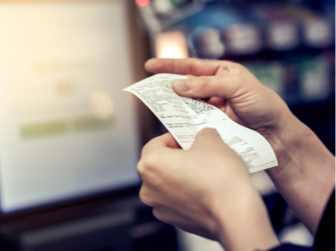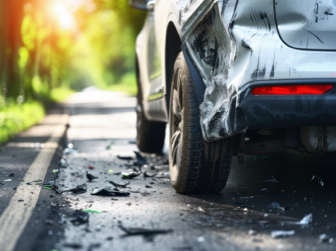Did you know that driving with worn tyres can affect insurance claims, is illegal and is highly dangerous? Checking your tyres often helps ensure your tyres are in good shape and that your vehicle is roadworthy.
What exactly should you look out for? Industry veteran, Gary Ingle, says it’s important to check that your tread is at least 1mm in depth, and that your tyres are not overly inflated or under inflated. “A simple way to test is to place a match horizontally in the tread. If the match is level, the tread should still be ok. Remember that 1mm is the minimum but most tyre manufacturers recommend replacing your tyres at 1.6mm.”
Under-inflated tyres can burst easily, and they also cause more friction with the road, which means your car will use more petrol. With over-inflated tyres your car will have less contact with the road surface, and it won’t handle as well. If you’re unsure of the correct inflation of your tyres, look for a sticker on the inside of the driver’s door which outlines the correct inflation levels for different loads. You will also find this information in your vehicle’s owner’s manual.
Worn tyres are a significant safety issue on South African roads. If your tyres are old, worn or damaged, they should be replaced as quickly as possible. “Most vehicle manufacturers recommend that you replace your tyres every six to 10 years, provided that you have them inspected by a professional annually after five years of age,” explains Ingle.
.jpg)
Not only does it impact road safety but worn tyres could also impact your bottom line. If you’re in a car accident, your car insurance claim could be refuted if it’s found your tyres were in poor condition. This is an important clause in most vehicle insurance policies. Do you understand the clauses in your insurance policy? MotorHappy agents are available to help you source the best possible insurance for your budget and your needs. We will help you source insurance quotes from some of South Africa’s top insurers and our experts will help you understand all the “legalese”!
.jpg)
- As tyres age, the rubber becomes harder, which affects the traction. Newer tyres grip the road tighter and more reliably, delivering better handling and performance.
- If tread goes below 1mm, you are in contravention of the Road Traffic Act. You could get a fine.
- Old tyres develop cracks on the inside and the outside of the rubber. This can lead to separation of the interior steel belt from the rest of the tyre.
.jpg)
While no tyre lasts forever, it is possible to make tyres last longer. Ingle shares these top tips from Tiger Wheel & Tyre:
- Keep all tyres, including the spare, inflated to the manufacturer’s recommended tyre pressure. This will save on petrol consumption and keep tyres from wearing out prematurely.
- Inflate tyres with nitrogen to keep them properly pressurised for longer, and because nitrogen makes them run up to 20% cooler, they last longer too.
- To achieve more uniform wear on tyres, and get longer use from them, rotate, balance and align them every 10 000 km or as recommended in your vehicle owner’s manual.
- Clean your tyres, and not just the sidewall to make them look good. Use soap and water to remove foreign substances that might cause the rubber to degrade.
- Inspect them monthly – a visual inspection will reveal if they are wearing unevenly, allowing you to get preventative maintenance done to extend their lifespan. You also might discover foreign objects that might cause damage if they remain wedged in the tread.
Following this advice will not only extend the lifespan of your tyres, saving you money in the long-run, but also improve your vehicle and driving safety.
What makes the Volkswagen Polo Vivo so popular?
Introducing the new Citroen C3 Max


